Watercolor paints are an easy, fun way to create art. One of my favorite things about them is that you can produce all sort of interesting effects using household items. Salt, tape and even crayons can manipulate the paint and give you more control.
Use crayons to create a wax resist technique for watercolor paints!
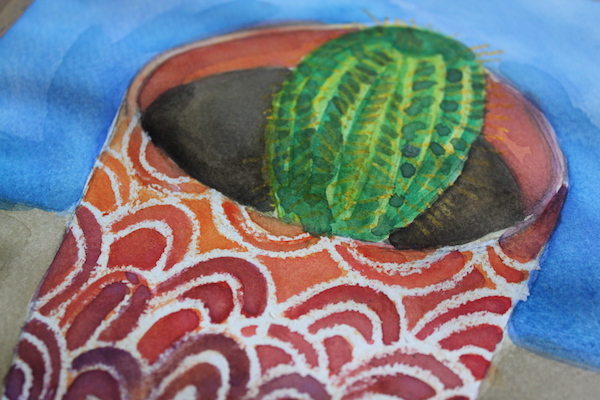
How it works
This technique is centered around the idea that water and wax don’t mix. By first drawing the waxy crayon onto your paper, you are creating an area where the paint won’t go. Instead, it will bead off the wax.
Tools needed for this technique

You don’t need a lot of special tools to produce the wax resist painting. I have my set of watercolor paints plus a set of crayons I bought at the drug store. In addition, I’m using a sheet of cold press watercolor paper.
Tip: For the wax resist, it’s important that you have solid, crisp lines. So, I’d recommend using hot press watercolor paper, or anything with as little tooth as possible. Otherwise, some of the watercolor pigment might seep into your lines. (I found this out the hard way!)
Test out your wax resist
Before applying this technique to your watercolor paintings, it’s important to test it on a scrap sheet of paper. That way, you’ll have a better idea of how it will react with your paper and paints and what you can do to improve.

I taped a piece of paper to my drawing board and then drew on the paper using two colors of crayons — white and blue. I wasn’t sure how the technique was going to work with a crayon other than white, but I wanted to find out!
To begin, I used my white crayon to draw on half of the paper. I pressed hard and evenly. Since my paper has some tooth, I went back over my lines. You’ll see I didn’t draw anything special — just some small, random shapes. It doesn’t have to be fancy. I repeated the process with my blue crayon.

Remember, the paint will go wherever the wax is not. So, if there’s inconsistency in your application, the technique might not work as well as it should.
After you’re finished with the crayon, move on to the painting process and watch the magic happen. Brushing your paint over the wax will cause it to bead on top of the lines and onto the rest of the paper. That’s good — it means the technique is working.
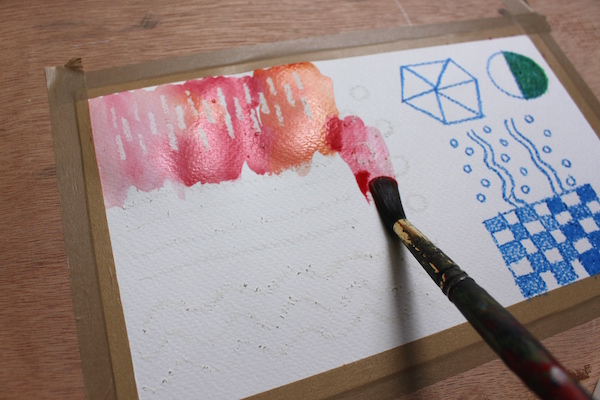
Once the test paper dried, I examined the white crayon versus the blue crayon. I really liked how the wax resist with the white crayon turned out. Because we know what color the paper is underneath, it gives the impression that I used some sort of masking fluid or tape to section off that paper. Instead, I went the easier route – you can’t even tell that there’s crayon on the page!

The blue crayon had less of a “wow” effect for me. My watercolors didn’t obscure or cover the waxy lines, but it didn’t look as special as the white crayon.
Using the wax resist in practice
By performing this simple test, I now have a sense of how things will look when I use the wax resist in a painting.
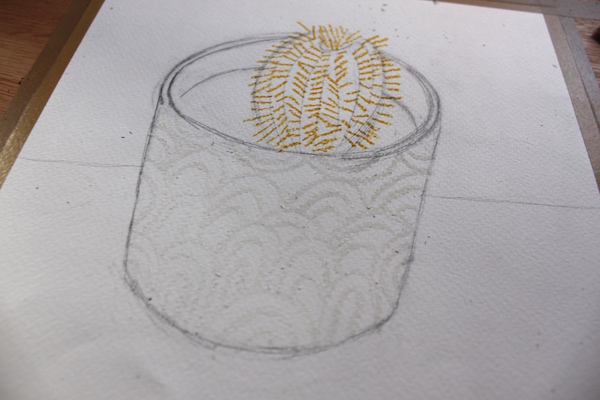
The way I choose to use the wax resist technique is decorative. Since you’re drawing lines on a page, you’re risking flattening out your subject and making it look less realistic. So, it makes more sense for me to use the crayon as a fun accent — like this potted cactus.
I completed my painting in the same way that I’d normally use watercolors. First, I sketched the image lightly in pencil. Then, I drew the decorative lines with my crayon, including scallops on the pot. I also used a yellow crayon to draw the needles of the cactus.
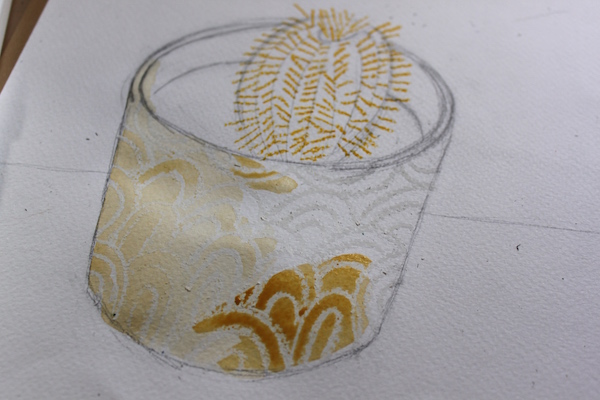
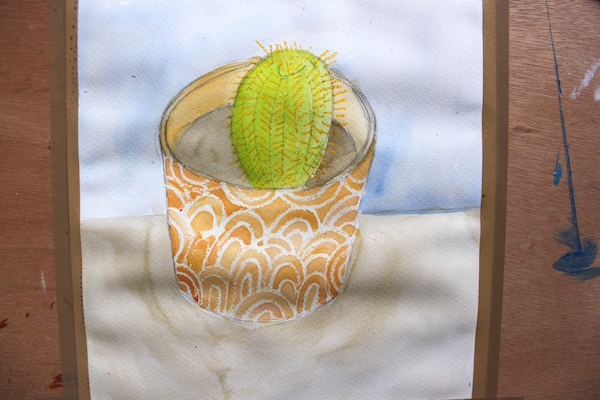
Once I drew in the details with crayons, I painted as I normally would. I worked in layers to build up color and form. You’ll see that the white crayon again looks great while the yellow gets lost among the pigment.
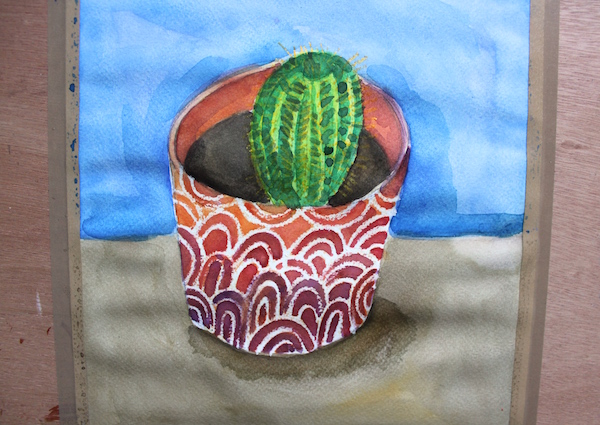
You’ll see that the white crayon again looks great while the yellow gets lost among the pigment.


Share tips, start a discussion or ask one of our experts or other students a question.
No Responses to “Create an Easy Watercolor Wax Resist Painting With Crayons”